World-class surgical care helps Hunter Lindsay grasp his potential
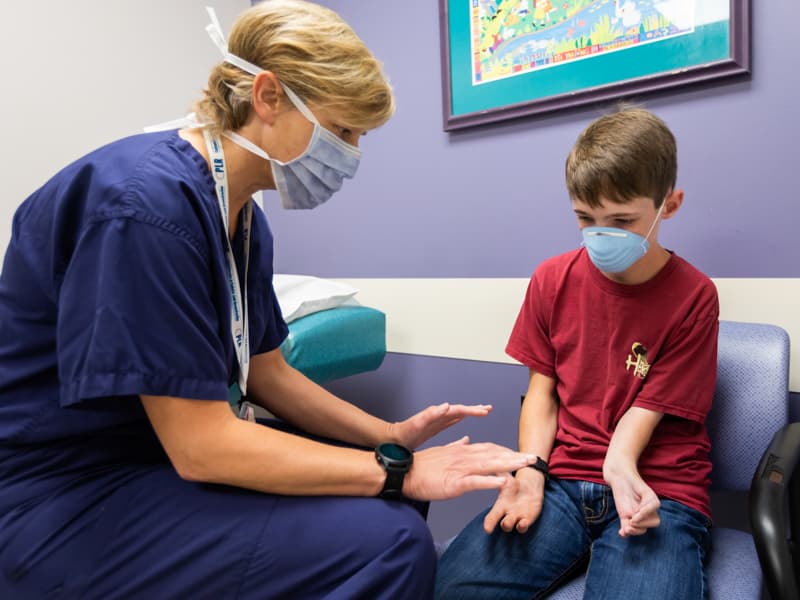
Hunter Lindsay, a seventh-grader at South Pontotoc Middle School, enjoys playing Xbox games and is happiest when working with his horse, Dakota. At school, he’s interested in robotics and would like to become a computer programmer.
As a patient with radial longitudinal deficiency, also known as radial clubhand, and bilateral thumb aplasia, Hunter was born with a left arm that is shorter than his right arm, and both hands that were missing thumbs. Thanks to Children’s of Mississippi care, he has gained the functionality to reach his full potential.
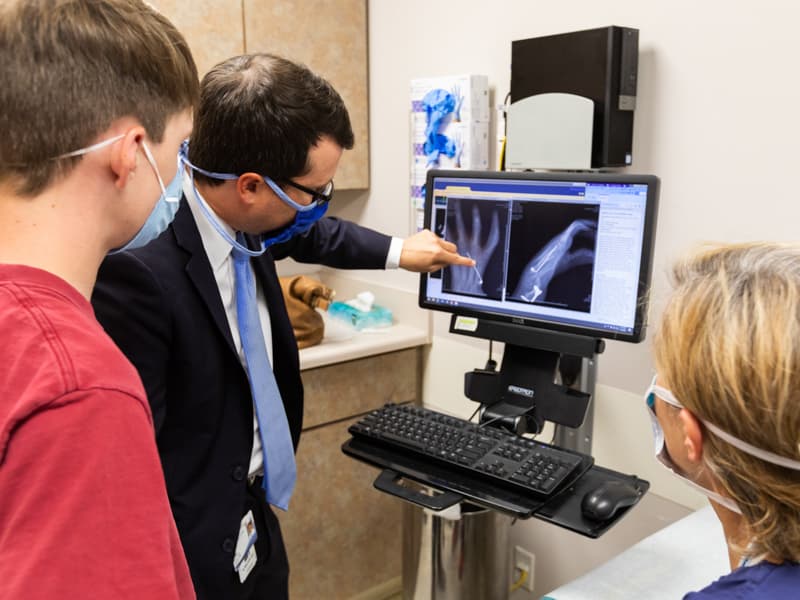
When he was about 1 year old, Hunter had surgery on his right hand that involved moving his index finger into the thumb position. Hunter's left hand, though, remained so malpositioned from birth that he could not see his fingers and was unable to use that hand at all.
After he went to live with his second cousin, Jerri Bennett, now his guardian, the discussion of additional corrective surgeries began. “I just wanted to see what was possible,” Bennett said. “I wanted Hunter to have every advantage and to reach his full potential.”
At Children’s of Mississippi, Hunter met Dr. Kellie Leitch, associate professor and chief of pediatric orthopaedic surgery, and Dr. Marc E. Walker, a hand surgery specialist and assistant professor of plastic surgery and orthopaedic surgery.
Hunter was able to share his hobbies and plans for the future with them, and a series of surgeries at Children’s of Mississippi is helping Hunter enjoy those activities now and look to a bright future ahead, Leitch said. “The first major surgery Hunter had was to straighten his hand and arm with a spatial frame. This took his hand from a position that was completely not functional and placed it at the end of his forearm and in a direction where he could use his hand. His second surgery was minor – the spatial frame was removed. Hunter’s third surgery involved an ulnar osteotomy and plate to stabilize the position of his hand in an even more functional position.”
Once his hand was placed in a functional position at the end of his ulna – Hunter does not have a radius bone in his forearm – his last surgery, performed by Walker, involved removal of an extra digit, reconstruction of the index finger, and rotational osteotomy of the middle finger metacarpal bone to allow for a more thumb-like relationship between the two digits.
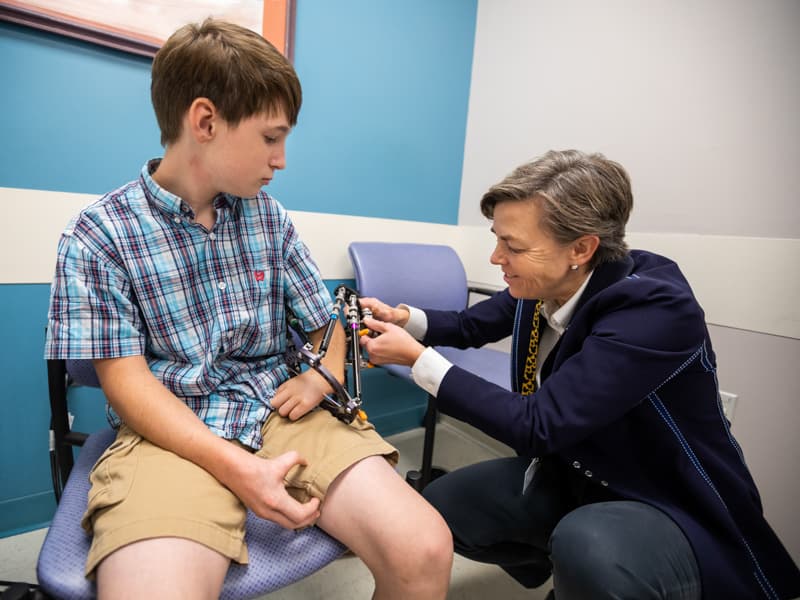
“In plastic surgery, and especially when reconstructing the hand,” said Walker, “it is important to consider both appearance and function, and this is exactly what our focus has been when treating Hunter.”
Since his last surgery, Hunter has been participating in rehabilitation with his hand therapist to strengthen the hand and forearm. “He’s having to exercise his mind in using his hand,” Bennett said.
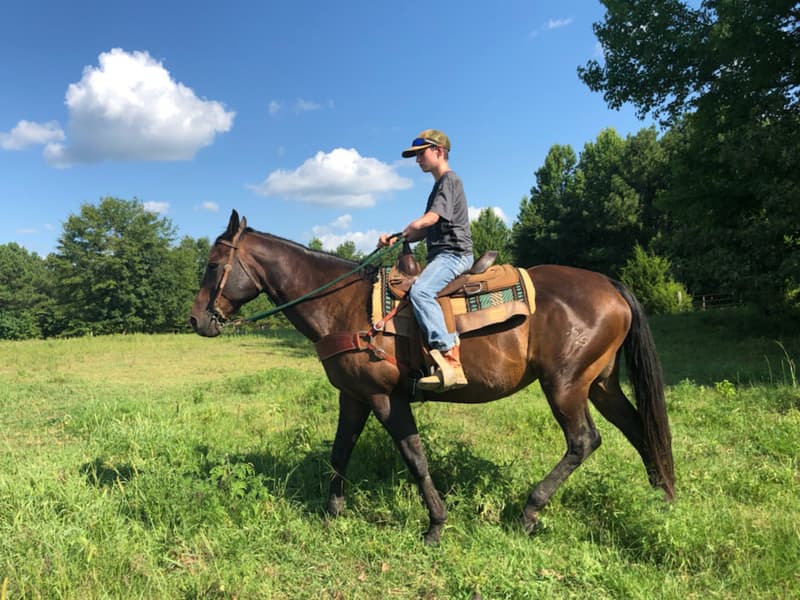
“A future surgery to lengthen his left arm is possible,” Leitch said. “Instead of an external fixator, a brace Hunter has had before, this surgery would involve the placement of a magnet-powered telescoping rod. After this procedure, Hunter would hold a magnetic field generator against his arm, powering the motor inside the implant to gradually lengthen his humerus and possibly his forearm.”
Hunter said he’s excited about gaining more function by having a longer left arm. “I also like that it wouldn’t mean having a (external) brace,” he said. “The one I had was heavy!”
Surgical care from Leitch, a pediatric orthopaedic surgeon who came to the University of Mississippi Medical Center from Canada, and from Dr. Walker, who specializes in plastic surgery and hand surgery, has made a huge difference in Hunter’s life, Bennett said. “Having Dr. Leitch and Dr. Walker both working to help Hunter has been wonderful.”
Collaboration among experts is an advantage that Children’s of Mississippi, UMMC’s pediatric arm, brings to patients, Walker said.
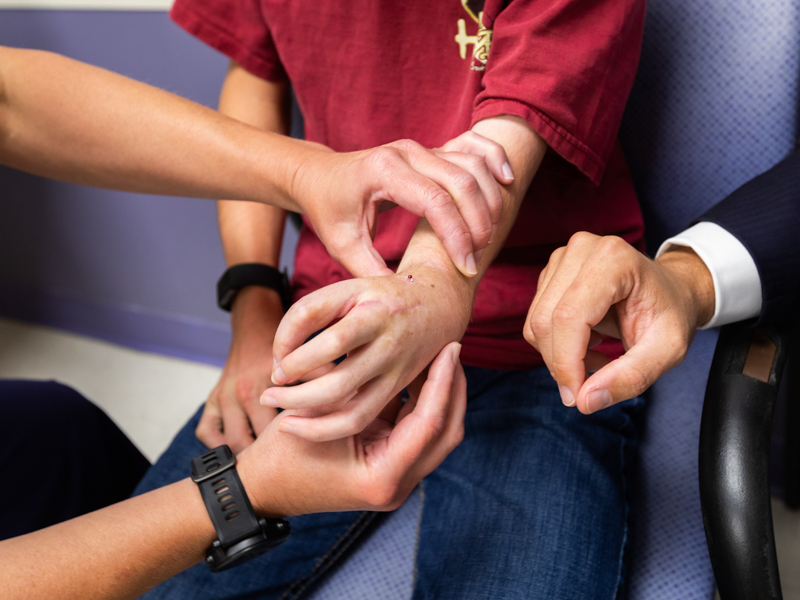
“Hunter's treatment course is a great example of the type of highly complex, multidisciplinary, and collaborative surgical care that we are delivering at UMMC and Children’s of Mississippi for patients all across the Southeast,” he said.
Walker most recently performed procedures to improve the appearance and functionality of Hunter’s left hand, and he and Leitch report that the series of surgeries is a success.
“Hunter is now able to use his hand and is interested in trying new activities,” Leitch said. “He seems dedicated to doing what he needs to do to improve, and is an excellent patient. He is a thoughtful young man who knows what he would like to achieve with his upper extremity, while still being realistic on what can be achieved. He has a great demeanor and is always calm and responsible. He is one of my favorite patients!”
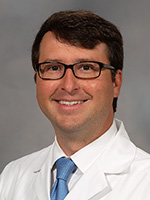
“Hunter is a gentleman,” Walker said. “He is polite, kind and quietly confident. He recognizes the challenge of his condition, but is unwilling to allow this to stop him from doing what he loves.”
Though his journey isn’t over, Hunter has already achieved a significant personal goal.
“When I first met Hunter, I asked him what he enjoyed doing the most and his reply was ‘Working with my horse, Dakota,’ ” Walker said. “When I asked him at his most recent clinic visit to tell me the most impactful thing that he can now do with his left hand, Hunter said, ‘I can grab and hold onto the rope to guide Dakota around the ring.’ I think this is probably the most telling accomplishment in his progress.”


